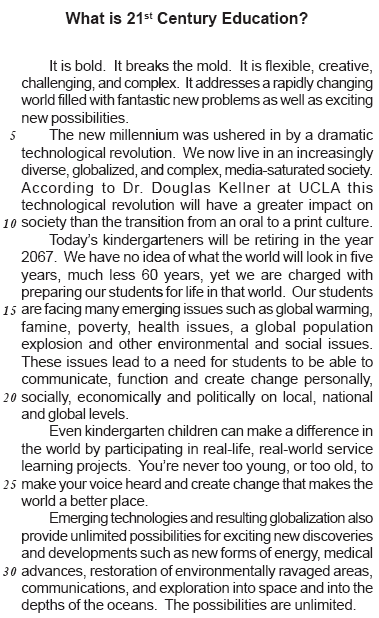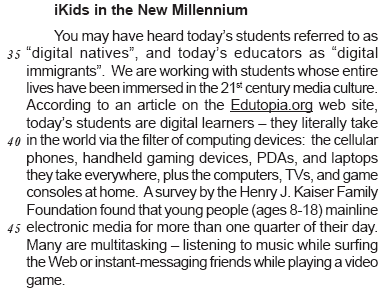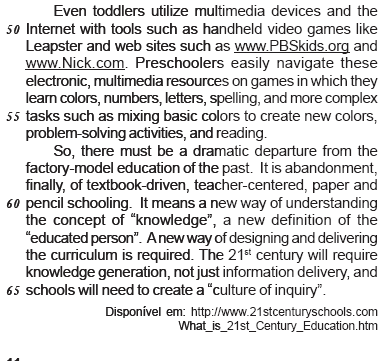


In Paragraph 6 (lines 34-48), the author uses the expressions "digital natives" and "digital immigrants". Choose the alternative that correctly explains the meanings of these expressions in the text.
- A. "Digital immigrants" refers to the fact that the students are immigrating to a new world, different from the one they were born into.
- B. "Digital natives" means that the educators are familiar with the new electronic devices, because they grew up in this technological environment.
- C. "Digital natives" and "digital immigrants" are used to symbolize the extreme intimacy of students and educators with technology.
- D. "Digital natives" and "digital immigrants" are used to symbolize, respectively, today's students' intimacy and the educators' unfamiliarity with technology.
- E. "Digital natives" refers to both students and educators who make good use of technology, while "digital immigrants" refers only to students who still need to learn to use computers.





